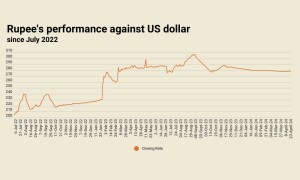EDITORIAL: As greenhouse gas emissions drive global warming, a new World Bank report warns that without immediate action to combat climate change rising sea levels, water scarcity and declining crops productivity could force 216 million people to migrate within their own countries by 2050. Sub-Saharan Africa alone would account for 86 million of internal migrants with 19 million more in North Africa, 40 million in East Asia and the Pacific region, and another 49 million closer to home us in South Asia. According to the report modelled on impacts of climate change in six regions, migration “hotspots” will emerge as soon as 2030 and intensify by 2050. Backing this ominous threat is a BBC report’s finding that the number of extreme hot days every year when the temperatures reach 50C has doubled since the 1980s, and now happen in more areas of the world than before. It goes on to note that on average, between 1980 and 2009, temperatures passed 50C about 14 days a year. The number rose to 26 days a year between 2010 and 2019. In fact, some Western countries experienced record-breaking temperatures this year – 48.8C in Italy and 49.6 in Canada.
As heat waves become longer and frequent they will have transformative effect on lives and livelihoods. Droughts, water shortage and heat stress will harm human health, damage ecosystems and make many areas uninhabitable for people. This is particularly worrying for a country like Pakistan — already among the world’s 10 most water-stressed states — which has been experiencing extreme weather events. Further escalation will disrupt agriculture — backbone of the economy — and food security, leading to an increased rural-to-urban migration. As the World Bank report notes, such movement will put significant strain on both sending and receiving areas, jeopardizing development plans. Cognizant of the impending threat, Prime Minister Imran Khan has taken some important steps to mitigate the effects of global warming such as the launch of “10 Billion Tree Tsunami” campaign and establishment of 15 national parks across the country under the “Protected Area Initiative”. Also, fuel standard is being upgraded to Euro 5 to check dangerous vehicular emissions. There is only so much nations with limited resources and least contribution to climate change can do to deal with the consequences of what the rich industrialized nations have been doing.
The biggest polluters, especially the largest historical emitter the US, have failed so far to fulfil their commitments they made in the Paris Climate Agreement as well as the previous two such deals. In fact, the then US president, Donald Trump, had formally withdrawn from the Paris agreement terming climate change a “hoax.” His predecessor Joe Biden, nonetheless, has shown serious interest in combating global warming. For its part China, the current leading polluter, has been holding good on its commitments regarding concrete time-bound action. But all must work urgently and effectively to keep the global temperatures at 2C, more desirably 1.5C, above pre-industrial levels. Hopefully, the world leaders’ gathering at the UN summit in Glasgow come November will produce an effective action plan for cutting fossil fuel emissions. They must also fulfil their Paris agreement obligation to provide financial resources to developing countries to help them minimize the impact of climate change.
Copyright Business Recorder, 2021






















Comments
Comments are closed.